“Other People’s Art”
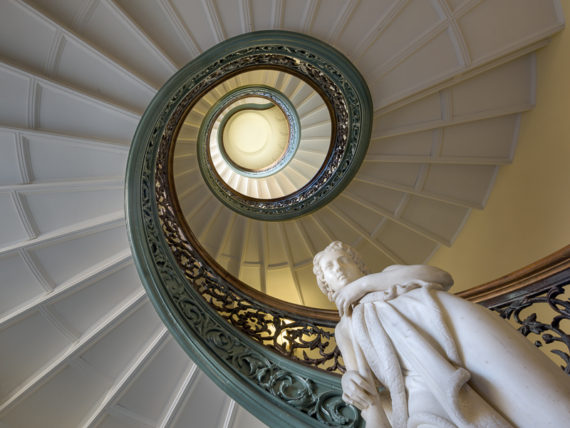
An ongoing topic of discussion among photographers is whether photographing “other people’s art” is appropriate, either ethically or legally. While some photographs are merely “record shots” of what the photographer saw, most photographs from serious photographers are intended to be the photographer’s creative work. But can photographing someone else’s artwork ever be considered the work of the photographer?
If you take a straight-on, “fill-the-frame” photograph of the Mona Lisa, it will be difficult for it to be anything other than a “record” shot of that famous painting. What is the photographer adding by taking a photograph? Is the photographer adding any originality, any new perspective, any new interpretation, any creativity? How about a photograph of a sculpture. What about architecture? What about an art installation? A building is the “art” of the architect. In addition to copyright, many buildings have also been trademarked (NYC’s Flatiron Building, the Empire State Building, San Francisco’s TransAmerica Building, etc.) to further limit what might be considered commercial exploitation of the structure. This blog post won’t provide any legal advice – consult your attorney, but merely points out that in addition to the question of the possible ethics issues of photographing other people’s art, there may also be legal issues, especially if the photograph is to be used for commercial purposes. We won’t go into the very involved legal discussions about “derivative work,” but if you’re photographing other people’s art be sure you understand the issues!
One very interesting legal case that touches on this topic involved the Korean War Veterans Memorial in Washington, D.C. by sculptor Frank Gaylord (1925-2018). 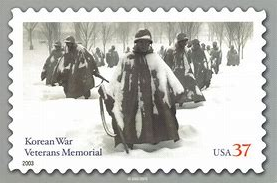 He sued the U.S. Postal Service for copyright infringement when the USPS used a photograph of the memorial on a postage stamp without his permission, nor paying Gaylord any compensation. In 2008, the Court of Federal Claims ruled in the USPS’s favor, saying the photograph was covered by the doctrine of “fair use,” exempting it from copyright infringement. However, in 2010, on appeal, the Court of Appeals reversed that ruling, and the Court of Federal Claims awarded Gaylord a settlement of $685,000. In addition, the photographer, a retired Marine, whose photograph was the basis for the stamp, agreed to pay Gaylord a 10% royalty on any future sales of the photograph.
He sued the U.S. Postal Service for copyright infringement when the USPS used a photograph of the memorial on a postage stamp without his permission, nor paying Gaylord any compensation. In 2008, the Court of Federal Claims ruled in the USPS’s favor, saying the photograph was covered by the doctrine of “fair use,” exempting it from copyright infringement. However, in 2010, on appeal, the Court of Appeals reversed that ruling, and the Court of Federal Claims awarded Gaylord a settlement of $685,000. In addition, the photographer, a retired Marine, whose photograph was the basis for the stamp, agreed to pay Gaylord a 10% royalty on any future sales of the photograph.
You might also remember the court case alleging that the Shepard Fairey, who “created” the Barack Obama “Hope” poster that was widely distributed in the 2008 election. Ultimately, it was determined that the poster was based on freelance photographer Mannie Garcia’s photograph. In 2011 the parties settled out of court for a confidential settlement.
Legal issues aside, most photographers, when they are taking photographs of another artist’s work are not doing so for potential profit or for commercial purposes. Not normally interested in taking record shots of other people’s art, I have always found it a challenge to try to add some degree of my creativity, or to add a different context or perspective than the original artwork possessed on its own. 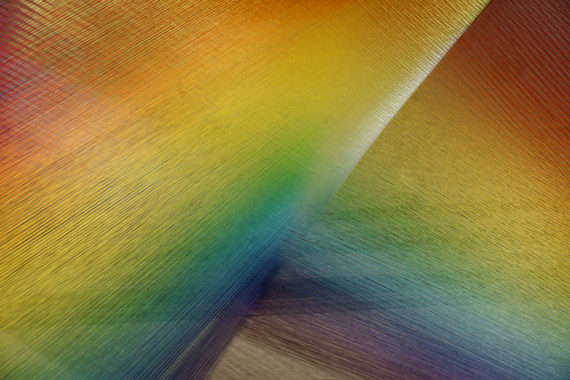
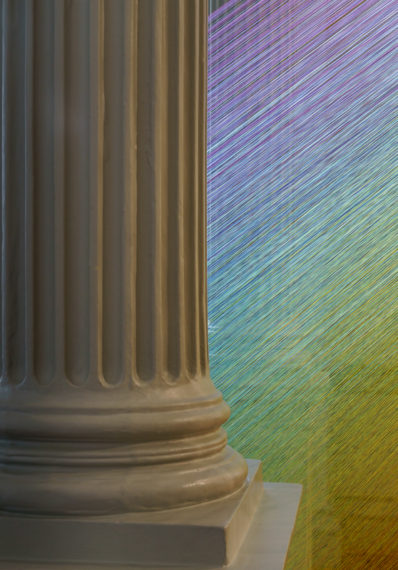
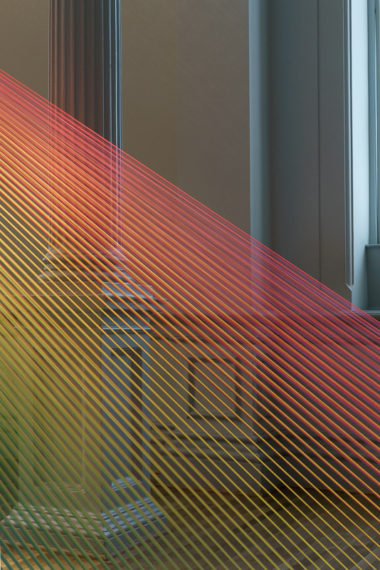
I have been in a number of museums that actively encourage the taking and sharing of photographs. This helps promote the museum and make many, many more people aware of an exhibit that would otherwise have been aware. Many museums have become extremely active posting on social media and have found that it enhances their presence, reach and attendance. An interesting discussion about this topic can be found “in this article in ArtNews.” But if you photograph other people’s art for anything other than personal use, be sure you understand the issues!

A very interesting and informative article that clearly outlines the issues that a photographer must consider when they photograph another’s work of art. Well done!
Thanks, Bill. Hope you’re enjoying the summer!
Well done article. To support Alan’s point, I had photographed Seattle’s Space Needle, intending to make a poster. Then I found out the Needle is privately owned and is copyrighted. When I went to their management office to obtain permission to make a poster they said no.
Roy, good thing you didn’t spend 40 or 50 hours of work conceiving, planning, getting models, post processing before finding out they wouldn’t give you permission! I’m being sarcastic because I wouldn’t be at all surprised if you spent 2x that many hours. Then I wonder if the studio that owns the trademark/copyright on King Kong would have given you a big problem too!
Amazing coincidence, Alan! I had recently encountered the “Don’t copy another artist’s work” dictum about a photograph I made of a portion of a statue in a museum. Although I didn’t agree with the precept, I didn’t bother pursuing it because I couldn’t convincingly argue that my position wasn’t influenced by the possibility I was reacting out of pique. Nevertheless, at the very instant your email regarding this post dinged on my device, I was fleshing out the lines of an objective rejoinder. I’m glad to see you’ve saved my further pursuits in thinking about a thorny issue :-)
It had occurred to me that rather than an argument, the best rejoinder might be a book of photographs involving iconic works of art used to express the photographer’s own perspectives :-)
I believe it depends on HOW the original work of art is used. Adding rouge and lipstick to the Mona Lisa and then printing it for sale would be a violation of these ethics (and all things moral). But if you use the painting as a starting point for a work of your own that departs from the subject itself and creates a new image with a different focal point then I’m not so worried. Your deliberate castration of Gabriel Dawe’s work is a perfect example of creativity that has produced a NEW image quite different from the original….you slimy photographer you!
Frank, you have such a way with words! In the same sentence you describe my work as “castration” and me as a “slimy photographer!” Oh, if I could only hear those endearing words from your reverberating, baritone voice!
I was worried you might take it the wrong way because of my absence from the digital group. Glad to know your sense of humor remains. We are off to Africa in three weeks where nothing but “original” art dwells. I like the blog.
Have a GREAT time in Africa! Where in Africa will you be going?
We fly into Nairobi and then set off on safari to three camps in the interior – capped by a camp next to the Serenghetti where we hope to see the “migration” in full force. No group tour..just the two of us.
Sounds fantastic!We’ve done it a number of times.If you want any (helpful?) tips, give me a call! Enjoy!
Lately, US museums have updated the attitude about photographing their art – sensible and liberating, adding to the value of the experience to patrons. Though the practice violates copyrights in a strict sense, no one really cares. Copies can be seen and had on line, free of charge, on line. The point is – as always with copyrights – it’s not your right to reuse for commercial gain. Even your hand sketched copies of museum art or architecture may be subject to suit if reused for commercial gain. But the right to photograph art in the museum is quite liberating and truly a gift to the consumer. And a few but not all venues are allowing pics of live performance. I believe the practice would benefit performing arts in the long run.
I also feel that under most circumstances it is improper to photograph art. However, if the picture you take is manipulated to an extent that the original art is unrecognizable then, I don’t think it is improper to photograph the original art. You are are merely using the original art as an element to create a NEW piece of art. Having said this, I don’t think one should make a habit of looking at existing art for the purpose of trying to figure out how to recompose it.
David, your response raises the thorny legal issue of “derivative works,” which I am not able to intelligently discuss. There have been numerous court cases about at what point does something become, in your words, “a new piece of art.” Very tricky!
Interesting discussion!
So, I would ask where is the line? I could argue that every time you photograph something in a city, there is the work of architects, decorators, city planners, etc., included in the frame. Any photo of the National Mall or the Memorials in Washington DC is crowded with pieces of buildings, sculptures and architectural designs created by others. The same could be said of any photo in NYC or any city skyline, bridges, etc.
Guillermo, good question. “Where is the line?” I think that’s for each of us to decide depending on whether what we shoot is going to be used commercially (i.e. for sale) and whether there are any ethical issues involved. I’m not a lawyer. It’s hard enough trying to be a photographer! But there are a number of important legal issues that all photographers should be aware of, such as copyright, trademark, shooting from public or private property, fair use, derivative works, etc. A successful and well-known photographer recently said to me, “maybe we have to become lawyers first, to be able to become photographers after that. :)”
Alan, great discussion, and it seems to be one of those topics where there is no clear-cut right or wrong and the answer is “it depends.” I also photographed Gabriel Dawe’s 2015 installation at the Renwick Gallery, but, in my version, I believe the important elements were the people silhouetted by the work, and not just the work itself.
I’m not sure this exactly fits into this topic, but I do enjoy photographing signs, both at home and while traveling, as well as during rallies and demonstrations. Sometimes it is just the sign, sometimes there is some background, people or other context added. I find it a fun way to document some of the oddities of the world around me, and I was planning on adding a gallery of signs to my website; I hope I am not stepping over the line by doing this. None will be used for commercial purposes….
The U.S. Postal Service has done it again! Now they have to pay a sculptor $3.5 million for using the wrong photograph of the Statue of Liberty on another postage stamp. Check it out at “DPReview.com”).
Next up, the cultural appropriation angle on phorography! Making original art is complicated. ;)